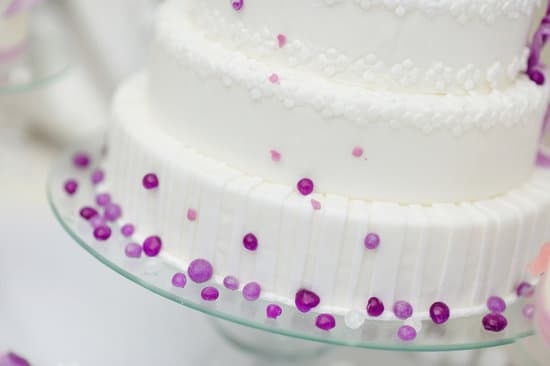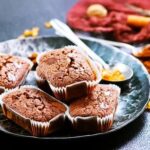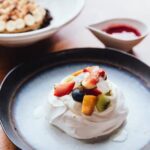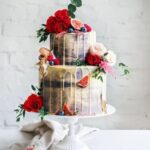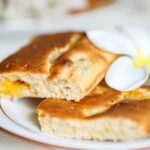Sheet cake decorating is a fun and creative way to elevate your baking skills and add a personal touch to your desserts. Whether you’re a novice baker or an experienced cake decorator, sheet cakes offer a versatile canvas for expressing your creativity. From birthdays to weddings to any special occasion, sheet cakes are a popular choice due to their simplicity and ability to feed a crowd.
When it comes to sheet cake decorating, having the right tools and materials is essential. From piping bags to offset spatulas to various tips for different designs, having the proper equipment can make all the difference in achieving your desired look. Additionally, choosing the perfect sheet cake base is crucial for ensuring that your decorations stand out and complement the overall design of the cake.
In this article, we will explore essential tools and materials for sheet cake decorating, different types of frosting and icing options, techniques for applying them on sheet cakes, creative design ideas, tips for achieving a smooth finish, as well as troubleshooting common decorating mistakes. Whether you’re looking to improve your skills or simply want some inspiration for your next baking project, this guide will help you take your sheet cake decorating game to the next level.
Essential Tools and Materials for Sheet Cake Decorating
Sheet cake decorating is an art that requires the right tools and materials to achieve professional-looking results. Whether you are a beginner or experienced baker, having the essential items on hand can make all the difference in your sheet cake decorating ventures. One of the most important tools for sheet cake decorating is a turntable, which allows for easy and smooth rotating of the cake while applying frosting or icing.
In addition to a turntable, other essential tools include offset spatulas in various sizes for spreading frosting, piping bags and tips for creating intricate designs, a bench scraper for achieving sharp edges on your sheet cakes, and a leveler for ensuring an even surface to work on. It’s also crucial to have a good quality cake comb or scraper to create textured patterns on the sides of your sheet cakes.
When it comes to materials, investing in high-quality ingredients such as butter, sugar, flour, and eggs will result in a better-tasting and more visually appealing sheet cake. It’s also important to have a variety of food coloring gels or powders to achieve vibrant colors in your decorations. Lastly, having edible embellishments like sprinkles, edible glitter, and fondant decorations can add an extra flair to your sheet cake designs.
| Tools | Materials |
|---|---|
| Turntable | Butter |
| Offset Spatulas | Sugar |
| Piping Bags and Tips | Flour |
| Bench Scraper | Eggs |
Having the right tools and materials not only makes the process of sheet cake decorating more efficient but also enhances the overall outcome of your creations. With practice and experimentation with different tools and ingredients, you’ll be able to elevate your sheet cake decorating skills and produce visually stunning cakes that taste just as good as they look. Remember to always keep your tools clean and well-maintained to ensure precision in your decorations.
Choosing the Perfect Sheet Cake Base
When it comes to sheet cake decorating, choosing the perfect base is crucial to the overall success of your design. The foundation of your sheet cake not only affects the taste but also plays a significant role in how well your decorations will hold up.
One of the most popular choices for a sheet cake base is a classic buttery yellow cake or a moist chocolate cake. These flavors are versatile and appeal to a wide range of tastes, making them suitable for various occasions.
Size and Shape
The size and shape of your sheet cake base will depend on the number of servings you need and the design you have in mind. Sheet cakes typically come in standard sizes such as 9×13 inches or 12×18 inches. If you require more servings, you can opt for a larger size or consider stacking multiple sheet cakes to create a tiered effect. Additionally, some bakers prefer using round or square sheet cakes depending on the design they want to achieve.
Flavor and Texture
In addition to size and shape, it’s essential to consider the flavor and texture of your sheet cake base. While traditional flavors like vanilla or chocolate are always crowd-pleasers, don’t be afraid to experiment with unique flavors like red velvet, lemon, or even funfetti for a playful touch.
When selecting a base, ensure that it complements the frosting and icing you plan to use for your sheet cake decorating. A moist and dense texture is ideal for holding intricate designs and layers of frosting without crumbling under the weight of decorations.
Different Types of Frosting and Icing for Sheet Cake Decorating
When it comes to sheet cake decorating, choosing the right type of frosting or icing can make a huge difference in the overall look and taste of your creation. There are several options to consider, each with its own unique characteristics and application techniques. Buttercream frosting is a popular choice for sheet cakes due to its creamy texture and versatility. This type of frosting can be easily colored and piped onto the cake to create intricate designs or smooth finishes.
Another common option for sheet cake decorating is fondant, a thick, pliable icing that can be rolled out and draped over the cake for a smooth, professional-looking finish. Fondant is perfect for creating intricate details, such as flowers or shapes, on top of your sheet cake. It also provides a clean canvas for painting or airbrushing designs onto the surface.
For those looking for a lighter alternative, whipped cream frosting is an excellent choice for sheet cake decorating. This fluffy and airy frosting is ideal for those who prefer a less sweet option but still want a smooth and creamy texture on their cake.
Whipped cream frosting pairs well with fresh fruit toppings or fillings, making it a refreshing option for summer-themed sheet cakes. No matter which type of frosting or icing you choose, experimenting with different textures and flavors will add depth and creativity to your sheet cake designs.
Incorporating various types of frosting and icing into your sheet cake decorating repertoire will allow you to explore new techniques and styles to enhance your creations further. Whether you prefer the classic look of buttercream, the polished finish of fondant, or the lightness of whipped cream, each type offers its unique advantages for creating stunning sheet cakes.
Experimenting with different combinations and decorations will not only elevate your skills but also provide endless opportunities for creative expression in your baking endeavors.
Techniques for Applying Frosting and Icing on Sheet Cakes
When it comes to sheet cake decorating, knowing how to properly apply frosting and icing is essential in achieving a beautiful and professional-looking design. One of the key techniques is the crumb coat method, which involves spreading a thin layer of frosting or icing over the entire cake to seal in any loose crumbs. This initial layer acts as a base for the final coat of frosting, ensuring a smooth and clean finish.
Another popular technique for applying frosting on sheet cakes is the “rosette” design. Using a piping bag fitted with a star tip, you can create elegant swirls of frosting that resemble delicate roses. This technique works well for adding texture and dimension to your sheet cake design, making it visually appealing and eye-catching.
For those looking to incorporate different colors or decorative elements into their sheet cake designs, the “marbling” technique is worth exploring. By blending different colored frostings or icings together using a spatula or toothpick, you can create unique patterns and designs on your sheet cake. This technique allows for endless creative possibilities and adds a playful touch to your decorating style.
| Technique | Description |
|---|---|
| Crumb Coat Method | A thin layer of frosting or icing spread over the entire cake to seal in crumbs |
| Rosette Design | Elegant swirls of frosting created with a star tip piping bag to resemble roses |
| Marbling Technique | Blending different colored frostings together to create unique patterns and designs on the cake |
Creative Ideas for Sheet Cake Designs
Theme-Inspired Designs
One of the most fun aspects of sheet cake decorating is the opportunity to get creative with designs that match a specific theme or occasion. Whether it’s a birthday, graduation, wedding, or holiday celebration, incorporating themed elements into your sheet cake design can really make it stand out.
For example, for a beach-themed party, you could decorate your sheet cake with edible seashells made from frosting or fondant. Get inspired by the event and let your creativity flow as you come up with unique and personalized designs.
Geometric Patterns and Shapes
If you’re looking for a modern and stylish sheet cake design, consider incorporating geometric patterns and shapes into your decorating. This can be achieved using various tools like stencils or piping tips to create clean lines, circles, triangles, or any other shape you desire. Experiment with different color combinations and arrangements to create visually striking geometric designs that will impress your guests. Remember to keep symmetry in mind to ensure a harmonious look to your sheet cake design.
Layered Texture Techniques
To add depth and visual interest to your sheet cake design, consider using layered texture techniques when decorating. This can include techniques like ombré frosting (gradually blending colors from light to dark), ruffles made from buttercream or fondant, or even edible paint applications for a watercolor effect.
Playing around with texture can elevate the overall look of your sheet cake and give it a more professional finish. Don’t be afraid to experiment with different techniques until you find the perfect combination that suits your design vision.
Tips for Achieving a Smooth Finish on Sheet Cakes
Achieving a smooth finish on sheet cakes is essential in creating a professional-looking and visually appealing dessert. Here are some tips to help you master the art of achieving a flawless surface on your sheet cake:
- Start with a well-leveled cake: Before icing your sheet cake, make sure that the surface of the cake is flat and even. Use a serrated knife or a cake leveler to trim any uneven edges.
- Crumb coat your cake: Applying a thin layer of frosting or icing, known as a crumb coat, will help seal in any crumbs on the surface of the cake. This initial layer acts as a base for the final coat of frosting.
- Use an offset spatula: An offset spatula is an essential tool for spreading frosting evenly and smoothly on the cake. Hold the spatula at an angle and use long strokes to create a seamless finish.
To achieve a flawlessly smooth finish on your sheet cake, consider these additional tips:
- Chill your cake before icing: Place your sheet cake in the refrigerator for about 15-20 minutes before applying the final coat of frosting. A chilled cake will make it easier to spread and manipulate the icing.
- Practice patience: Take your time when spreading the frosting to ensure that it covers the entire surface evenly. Smooth out any imperfections with your spatula as you go along.
- Clean up any smudges: If you notice any smudges or bumps on the surface of your sheet cake after applying the frosting, gently wipe them away with a clean, damp paper towel.
By following these tips and techniques, you can elevate your sheet cake decorating skills and impress your friends and family with beautifully finished desserts. With practice and patience, you will soon be able to create stunning sheet cakes that look as good as they taste.
Troubleshooting Common Sheet Cake Decorating Mistakes
Sheet cake decorating can be a fun and rewarding experience, but like any skill, it comes with its fair share of challenges. From uneven frosting to air bubbles in your icing, there are several common mistakes that can occur when decorating sheet cakes. Fortunately, with the right knowledge and techniques, these issues can often be easily resolved.
Here are some common sheet cake decorating mistakes you may encounter, along with tips on how to troubleshoot them:
1. Uneven Frosting: One of the most common problems when decorating a sheet cake is ending up with uneven frosting or icing. This can result in an unprofessional finish that detracts from the overall appearance of your cake. To avoid this issue, make sure to apply a crumb coat before adding the final layer of frosting. A crumb coat helps seal in any loose crumbs and creates a smooth base for the rest of your frosting.
2. Air Bubbles in Icing: Another frustrating mistake that can occur while decorating a sheet cake is air bubbles in your icing. These bubbles can create unsightly pockets on the surface of your cake and affect its overall appearance. To prevent air bubbles from forming, try tapping the sides of your cake pan gently after adding the icing to release any trapped air. You can also use a toothpick to carefully pop any visible bubbles before they set.
3. Runny or Thick Frosting: Achieving the perfect consistency for your frosting is key to successful sheet cake decorating.
If your frosting is too runny, it will slide off the sides of your cake, while frosting that is too thick can be difficult to spread evenly. To adjust the consistency of your frosting, add more powdered sugar if it’s too thin or a small amount of milk if it’s too thick until you reach the desired texture.
By being aware of these common sheet cake decorating mistakes and knowing how to troubleshoot them effectively, you’ll be better equipped to create beautiful and professional-looking cakes every time. With practice and patience, you’ll soon be able to elevate your sheet cake decorating skills to new heights.
Conclusion
In conclusion, mastering the art of sheet cake decorating can truly elevate your baking skills and create stunning creations that will impress your friends and family. By learning about the essential tools and materials, choosing the perfect sheet cake base, experimenting with different types of frosting and icing, and practicing various techniques for applying them, you can take your sheet cake decorating to the next level.
Furthermore, exploring creative ideas for sheet cake designs and incorporating personal touches will make your creations stand out. Whether you’re a beginner or a seasoned baker, there are always new techniques to learn and skills to perfect in the world of sheet cake decorating. With patience, practice, and a little creativity, you can elevate your sheet cake decorating skills to create beautiful and delicious masterpieces.
In the end, remember that practice makes perfect when it comes to sheet cake decorating. Don’t be afraid to try new things, experiment with different designs, and most importantly, have fun with it.
Keep honing your skills, learning from any mistakes along the way, and soon enough you’ll be creating professional-looking sheet cakes that not only taste amazing but also look like works of art. So gather your tools, whip up some frosting, and get ready to impress everyone with your newfound sheet cake decorating prowess.
Frequently Asked Questions
How to Decorate Sheet Cake at Home?
Decorating a sheet cake at home can be a fun and creative process. You can start by choosing a theme or color scheme for your cake.
Using piping bags with different tips, you can pipe designs, borders, or even write messages on the cake. Adding sprinkles, fresh fruits, edible flowers, or chocolate shavings can also enhance the appearance of the sheet cake.
How Do You Dress a Sheet Cake?
Dressing a sheet cake involves adding decorative elements to make it visually appealing. You can use buttercream frosting to create swirls, rosettes, or other designs on top of the cake.
Fresh flowers, edible glitter, colorful sugar pearls, or themed cake toppers can be used to elevate the look of the sheet cake. Paying attention to symmetry and balance in your decorations can make a big difference in the overall presentation.
How Do You Put Icing on a Sheet Cake?
Putting icing on a sheet cake requires some finesse to achieve a smooth and even finish. Start by spreading a thin layer of icing over the top of the cake using an offset spatula. Gradually add more icing as needed to cover the entire surface and smooth out any bumps or air pockets.
To create texture or designs, you can use different tools like combs or scrapers. Allow the icing to set before adding additional decorations or piping on top for best results.

Welcome to our cake decorating blog! My name is Destiny Flores, and I am the proud owner of a cake decorating business named Cake Karma. Our mission is to provide delicious, beautiful cakes for all occasions. We specialize in creating custom cakes that are tailored specifically to each customer’s individual needs and tastes.

